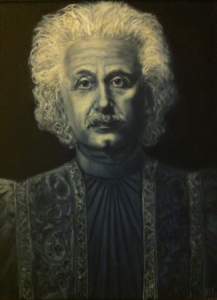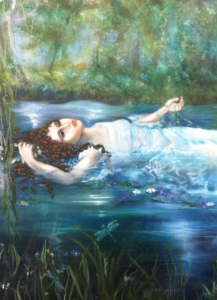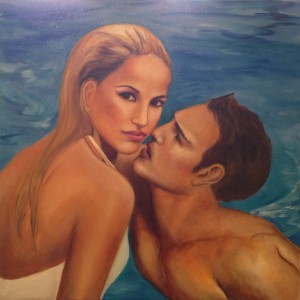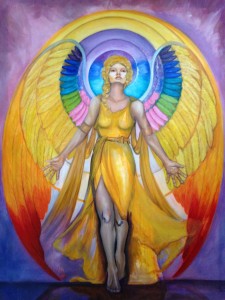Einstein: Portrait in Renaissance Clothing
Oil on canvas, 18” x 24”, 1993 $6500

My admiration for this great man inspired me to paint this portrait. Here I have depicted Albert Einstein in Renaissance clothing, and as I see him – a true Renaissance man. In addition to the Nobel prize winning work in theoretical physics for which he is known, Einstein was also a brilliant concert violinist. Einstein actually claimed that the special theory of relativity came to him as he was playing the violin, in a vision of himself riding a beam of light through the Cosmos.
A great humanitarian, like Leonardo da Vinci, Einstein was also a vegetarian, and abhorred war and violence. He often spoke of his regret for what came of his contribution to nuclear physics, and was an advocate for universal nuclear disarmament. Einstein was a great supporter and believer in both the arts and the sciences, and I can imagine with his charming eccentricities and casual wit, he would have fit in seamlessly at the 15th court gatherings of Duke Sforza of Milan or the Medicis of Florence.
I chose to paint this in black and white to modernize and balance the Renaissance details, and in homage to the many iconic, black and white photographs that have popularized his image. I also chose to have him face fully straight on to the viewer, as this is a very modern pose, and because I feel it rightly reflects his direct and genuine gaze, in which he seems intent to impress his consciousness onto the mindset of the viewer. I have been told by some that as they stood before this portrait, they half expected him to start speaking to them, he seemed so fully present. I take that as a great compliment, and I hope that I have done justice in capturing his kindness, intelligence, and audacity.



